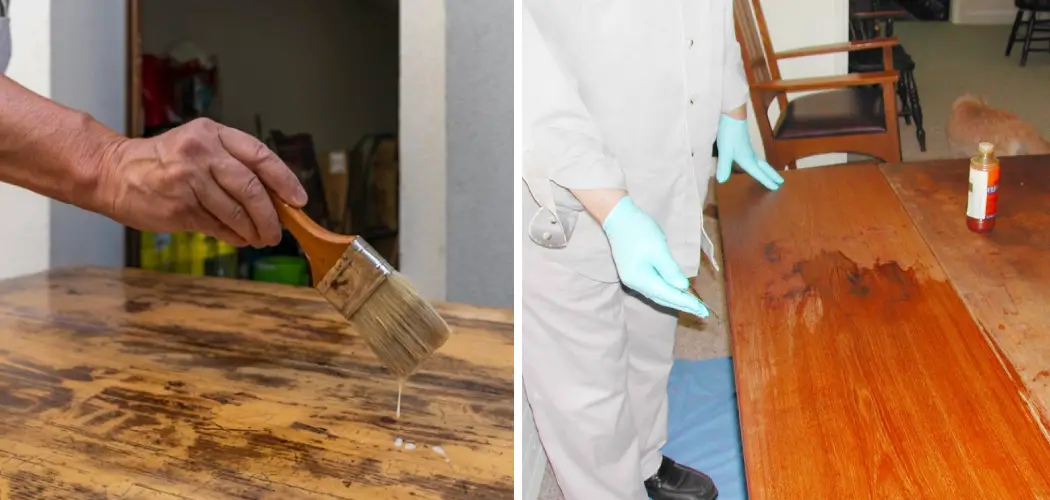If you’ve ever noticed a beautiful piece of furniture that looks as if it has been sitting outside in the sun for years, chances are you were looking at teak. Teak is an incredibly durable wood that not only holds up well against the outside elements but can be restored to its original beauty with some simple maintenance.
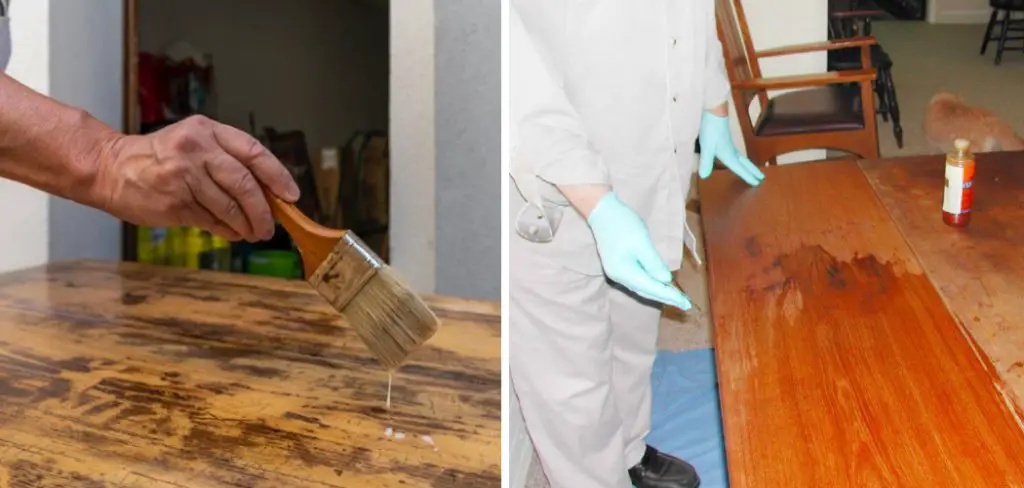
Over time, outdoor furniture made from teak develops a silvery gray patina which actually enhances its texture and look rather than detracting from it. However, if restoring the teak table back to its original condition is what you desire, then this blog post will guide you through how to restore teak table! Do you have an old teak table in desperate need of restoration?
Well, if so, you’re in luck—restoring teak furniture is a relatively straightforward process that can transform this beloved family heirloom into something that looks just as good as the day it was purchased. In this blog post, we’ll walk through each step of the restoration process from start to finish. By the time you’re done reading, your teak table will be restored and looking beautiful once again.
Why May You Want to Restore Teak Table?
1 . To Bring Back its Natural Beauty
A well-maintained teak table is a thing of beauty. Its natural golden hue, intricate grain patterns, and smooth texture make it a popular choice for many homeowners. However, over time, exposure to the elements can cause the wood to fade and lose its luster. Restoring your teak table can bring back its original beauty and make it the centerpiece of your outdoor space once again.
2 . To Extend Its Lifespan
Teak is known for its durability and resistance to rot, mildew, and pests. However, even with proper care, teak furniture can deteriorate over time when exposed to harsh weather conditions. By restoring your teak table, you are essentially giving it a new lease on life and ensuring that it will continue to serve you for many years to come.
3 . To Save Money
Buying a new teak table can be a significant investment. However, by restoring your existing one, you can save money and still enjoy the benefits of owning a beautiful and durable piece of furniture. Additionally, with proper maintenance, your restored teak table can last just as long as a new one, making it a cost-effective option in the long run.
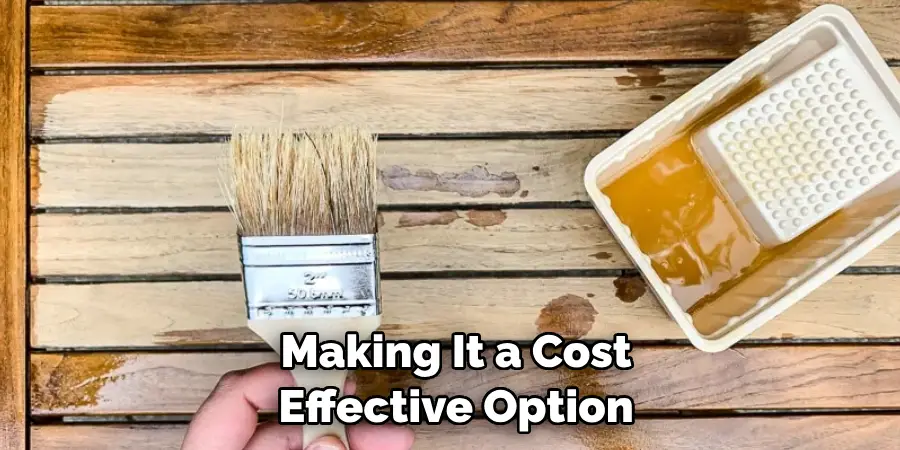
4 . To Preserve its History
Teak tables are not only aesthetically pleasing but also have a rich history. Teak has been used for centuries in shipbuilding and furniture making due to its strength and natural resistance to water. By restoring your teak table, you are preserving a piece of history and giving it a new life.
5 . To Customize Its Look
Restoring your teak table also allows you to customize its look according to your preferences. You can choose the type of finish you want, whether it be natural wood or a darker stain. You can also opt for different styles of sanding, such as smooth or weathered, to achieve the desired look for your outdoor space.
6 . To Contribute to Sustainability
Teak is a highly sustainable wood, and restoring your teak table can help reduce waste and promote sustainability. By giving your old teak table a makeover instead of discarding it, you are reducing the demand for new furniture and minimizing your environmental impact. It’s a small but significant way to contribute to a more sustainable future.
14 Ideas on How to Restore Teak Table
1 . Use Mild Soap and Water to Clean Your Teak Table
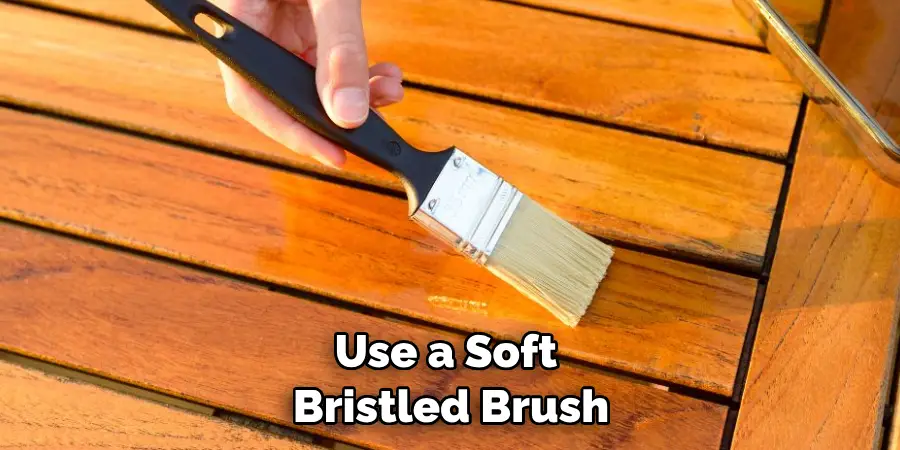
Cleaning your teak table is the first step in restoring it. Use a soft-bristled brush, mild soap, and water to gently scrub away any dirt or grime on the surface of the table. Avoid using harsh chemicals or solvents as they can damage the natural oils in teak wood. Also, make sure to rinse the table thoroughly with clean water and let it dry completely before moving on to the next step.
2 . Sand the Table for a Smooth Finish
Sanding is an essential part of restoring teak furniture. It helps to remove any weathered or rough spots on the surface of the table, giving it a smooth finish. Use fine-grit sandpaper, and always sand in the direction of the wood grain. Start with a coarse grit and gradually move to finer grit for a more polished finish.
3 . Apply Teak Brightener to Enhance Color
Over time, teak furniture can lose its natural color due to exposure to sunlight. To bring back its original hue, you can use a teak brightener. Apply it with a soft cloth or brush and let it sit for about 15 minutes before rinsing it off. This will not only help restore the color but also remove any stubborn stains.
4 . Use Teak Sealant to Protect Your Table
To protect your teak table from future damage, you can apply a teak sealant after cleaning and sanding it. This will help repel water, prevent mildew growth, and keep the wood looking new for longer. Make sure to follow the instructions on the sealant’s label for best results.
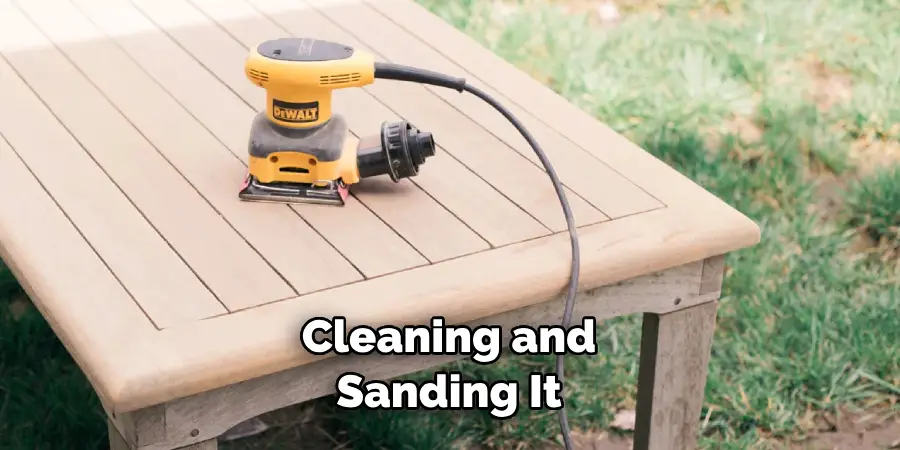
5 . Give Your Table a Coat of Teak Oil
For added shine and protection, you can also apply teak oil to your table after cleaning and sanding. This will help to nourish the wood and enhance its natural color. Make sure to use a clean cloth and wipe off any excess oil after applying it.
6 . Stain Your Table for a Different Look
If you want to change the color of your teak table, you can stain it with a wood stain of your choice. Make sure to choose a stain that is specifically designed for use on teak wood. Apply it with a brush or cloth, following the direction of the wood grain. You can also mix different stains to create a custom color.
7 . Repair Any Cracks or Scratches
As part of the restoration process, make sure to inspect your table for any cracks or scratches. These can be fixed with a teak wood filler or epoxy. Follow the instructions on the product and make sure to sand down any excess once it is dry.
8 . Replace Any Damaged Parts
If your teak table has any severely damaged parts, it may be necessary to replace them altogether. This could include broken legs, cracked panels, or missing pieces. You can either purchase replacement parts or have them custom-made to match your table.
9 . Regularly Clean and Maintain Your Table
To keep your restored teak table looking its best, it is important to regularly clean and maintain it. This includes wiping down the surface with a damp cloth, avoiding harsh chemicals or cleaners, and periodically reapplying teak oil or sealant.
10 . Protect Your Table from the Elements
Teak is a durable wood, but it is still susceptible to damage from harsh weather conditions. If possible, keep your teak table in a covered outdoor area or use furniture covers when not in use. This will help prolong its lifespan and reduce the need for frequent restoration.
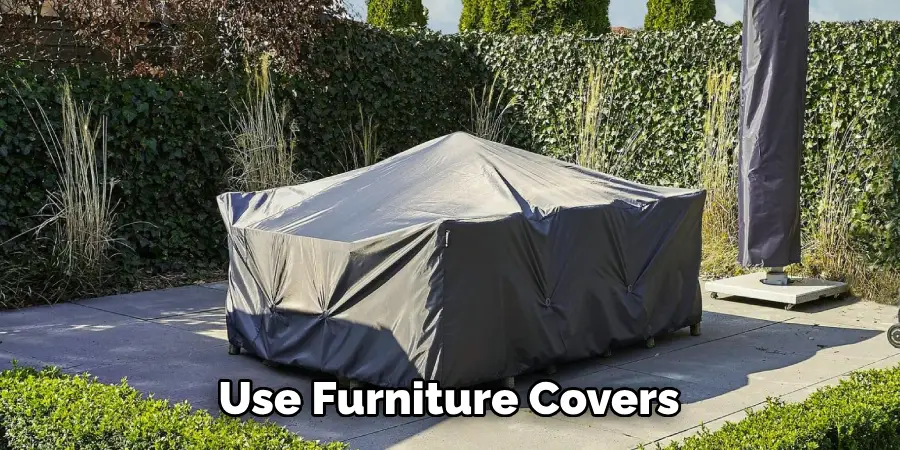
11 . Consider Professional Restoration Services
If your teak table is heavily weathered or damaged, you may want to consider hiring professional restoration services. They have the expertise and equipment to properly restore your table and ensure it looks as good as new.
12 . Take Preventative Measures to Avoid Future Damage
To prevent the need for frequent restoration, there are some preventative measures you can take. This includes using coasters and placemats to protect the surface from spills and scratches, avoiding placing hot objects directly on the table, and regularly cleaning off any debris or leaves that may accumulate.
13 . Keep an Eye Out for Mold or Mildew Growth
If your teak table is kept in a humid environment, it may be prone to mold or mildew growth. Keep an eye out for any signs of this and address it immediately if necessary. You can use a mixture of water and vinegar to clean the affected area, or a teak cleaner specifically designed to remove mold and mildew.
14 . Store Your Table Properly During Winter Months
If you live in an area with harsh winters, it is important to properly store your teak table during these months. This could be in a shed or garage, or even inside your home. Make sure to clean and dry the table before storing it to prevent any damage from moisture.
Frequently Asked Questions
What Precautions Should You Take Before Starting to Restore Teak Table?
In order to ensure a successful teak table restoration process, it is important to take certain precautions before starting. These may include:
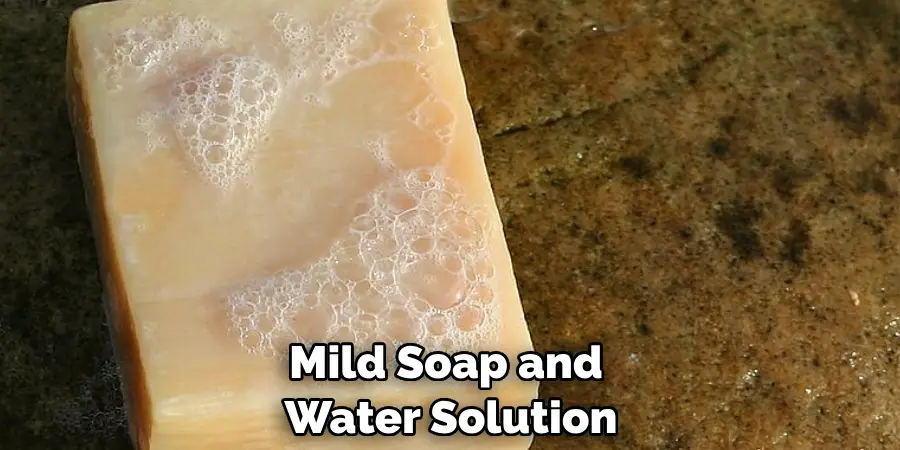
- Clean the table thoroughly with a mild soap and water solution.
- Strip any existing finish or sealant using an appropriate stripping agent.
- Sand the surface of the table lightly to remove any remaining finish and to smooth out any rough areas.
- Test the products you will be using on a small, inconspicuous area of the table to make sure they do not cause any damage or discoloration.
- Work in a well-ventilated area and use appropriate protective gear, such as gloves and goggles, when handling chemicals.
What Products Do You Need to Restore Teak Table?
The products you will need to restore a teak table may vary depending on the condition of the table and the level of restoration required. However, some common products that are often used include:
- A mild soap and water solution for cleaning.
- An appropriate stripping agent for removing any existing finish or sealant.
- Sandpaper or a sanding block for smoothing out the surface of the table.
- A teak sealer or oil to protect and enhance the natural color of the wood.
Can I Restore a Severely Damaged Teak Table?
In some cases, severely damaged teak tables may be challenging to restore. However, it is still possible with the right tools and techniques. If the damage includes deep scratches or cracks in the wood, you may need to use a wood filler before sanding and refinishing the table. It is important to follow the manufacturer’s instructions carefully and to test the filler on a small area first. In extreme cases, it may be necessary to seek professional help to restore a severely damaged teak table.
How Often Should I Restore My Teak Table?
The frequency of teak table restoration depends on various factors such as the climate, level of use, and exposure to sunlight. As a general rule, it is recommended to restore your teak table every 2-3 years, or when you notice the color and finish starting to fade. Regular cleaning and maintenance can also help prolong the lifespan of your teak table and reduce the frequency of restoration.
What Can I Do to Maintain My Newly Restored Teak Table?
To keep your newly restored teak table in good condition, it is important to follow these maintenance tips:
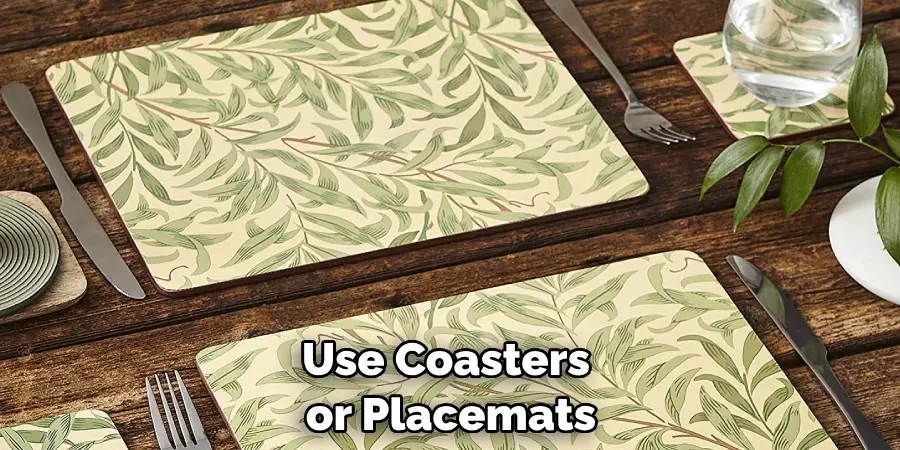
- Clean the table regularly with a mild soap and water solution.
- Avoid using harsh chemicals or abrasive cleaners that can damage the wood.
- Apply a teak sealer or oil every 6-12 months to protect and enhance the natural color of the wood.
- Keep the table out of direct sunlight when possible to prevent fading.
- Use coasters or placemats to protect the surface from scratches and stains.
By following these simple maintenance tips, you can help preserve the beauty and integrity of your restored teak table for years to come. Remember to also check for any signs of wear and tear regularly, so you can address them before they become major issues that require a full restoration.
Conclusion
Restoring a teak table is no small feat, but it is definitely possible and worth the effort for those who want to preserve a vintage piece of furniture. Take your time, use the right supplies and method, ask questions if needed, and you’ll be proud of the outcome. If you are really feeling adventurous and want to get creative with the restoration look, don’t forget to think about adding unique decorations like artwork or wallpaper to your newly painted or refinished teak table!
Now you know how to restore teak table! Remember that restoring a piece of furniture isn’t just a physical job but can also be an artistic endeavor too. No matter what your motivation was for restoring the teak table in the first place – whether it is because of its sentimental value, potential monetary value, or simply because you love the look – it brings great satisfaction knowing that you were able to reclaim this beautiful piece of work from time itself!

